Beauty Comes Naturally on the Beaches of Florida’s Paradise Coast
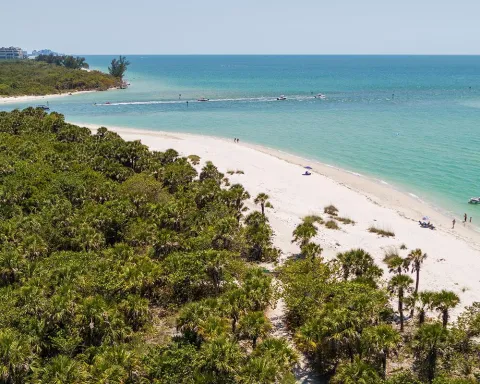
The white-sand beaches of Florida’s Paradise Coast — all 30 miles of them — offer something for everyone, whether it’s immediate access to the Gulf of America from one of the many luxury resorts, a standup paddleboarding excursion, a sunset party, a leisurely walk or vigorous jog on the sand, or just a few hours lounging on a beach chair and splashing in turquoise waters.
If you’re looking for a more natural setting, Florida’s Paradise Coast offers several beaches that will give you that true getaway feel. They’re close to restaurants, shopping, hotels, attractions, entertainment and the rest of civilization, but they feel far away from it all.
Here’s an overview of our more wild, natural beaches. All of them are open to the public, and all but one are easily accessible.
Clam Pass Beach Park
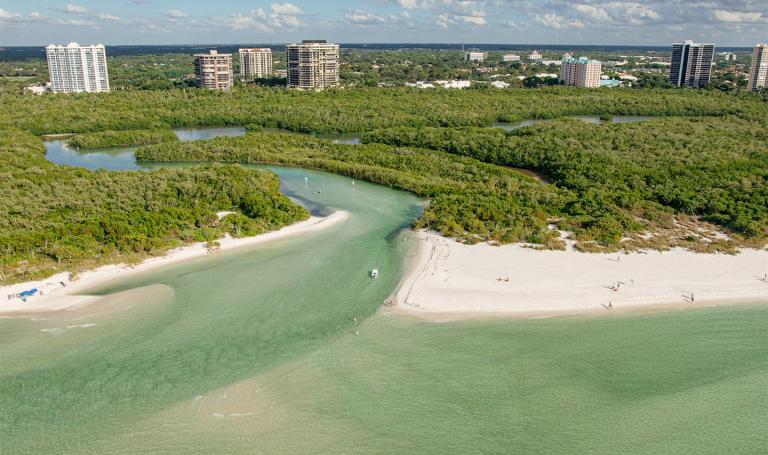
At Clam Pass Beach Park, a 35-acre coastal habitat and preserve six miles north of Naples, your day at the beach comes complete with a trip through a mangrove forest. From the parking lot, you stroll (or ride a free mini-tram) along a three-quarter-mile boardwalk, much of which is shaded with canopies of trees.
Whether you walk or ride, you'll encounter a wealth of bird species, native plants and other marine life that call this lovely nature preserve home. The park’s dense mangrove forests will almost make you forget that homes and commercial districts are not far away.
Rhodes End restaurant, part of the Naples Grande Beach Resort, offers a Mediterranean-style menu and an extensive cocktail list to go along closeup water views.
Family tip: Book a guided nature walk with the Conservancy of Southwest Florida. It’s designed for adults and kids alike.
Delnor-Wiggins Pass State Park
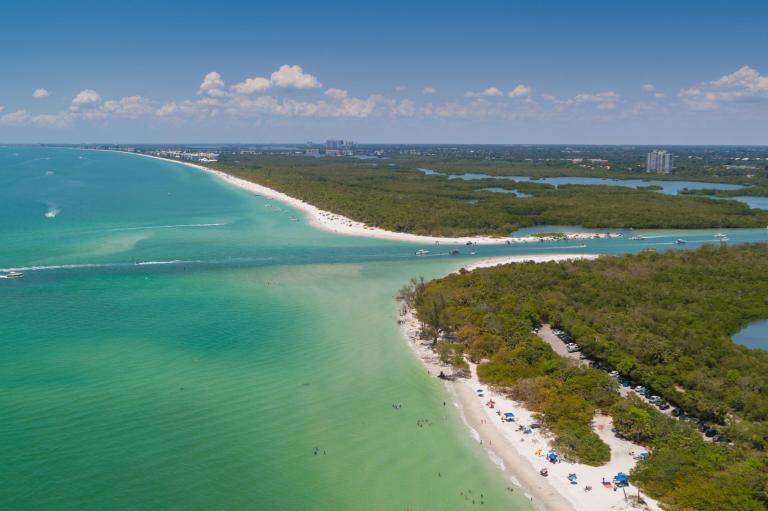
This 166-acre natural wonder sits on the northern end of Florida’s Paradise Coast. The park is separated from the mainland by tidal creeks and mangrove swamps, enhancing its remote feel.
Birders rejoice. Delnor-Wiggins is part of the Great Florida Birding Trail. You’ll spot eagles, ospreys and many other species in their natural habitats.
A hard-bottom reef just offshore makes the park a great destination for snorkelers and scuba divers. Kayakers and paddleboarders can wind their way through estuaries and tidal pools.
You can enjoy boardwalks, observation towers, and a picnic area with grills. Conveniences include restrooms, drinking fountains, bicycle racks, outdoor showers and a concession stand where you can buy food and drinks, and rent paddleboards, kayaks, canoes, umbrellas, and beach chairs.
And here’s a bonus: Delnor-Wiggins has four parking lots, plus spillover parking nearby Conner Park.
Barefoot Beach Preserve
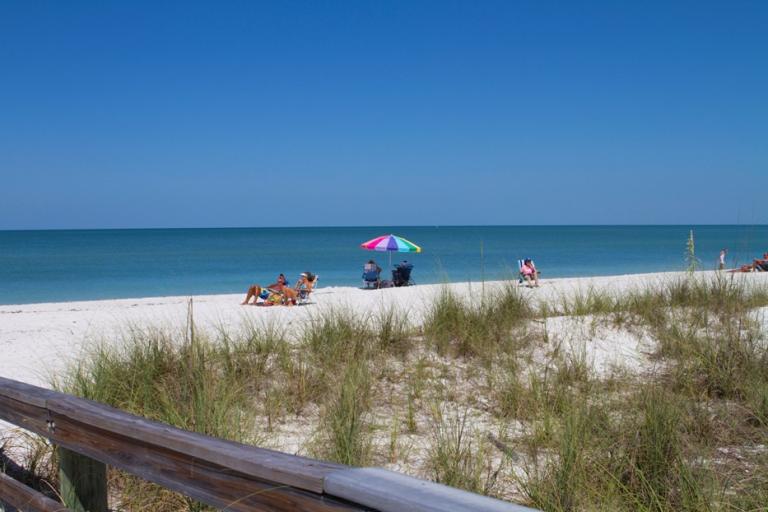
This 342-acre county park is located just north of Delnor-Wiggins. Barefoot Beach is one of the last remaining undeveloped barrier islands in Southwest Florida, with more than 8,000 feet of pristine shoreline, resplendent with colorful shells.
Because of the vast mangrove forest that abuts the beach, there’s hardly a building in sight. You reach the beach by boardwalk. You’ll encounter dunes covered with sea oats and sea grapes. And, of course, the turquoise waters of the Gulf are just steps away.
Note: Barefoot Beach is light on amenities. It has portable restrooms and a wash station, but no concessions. The main beach access point is on the park’s northern end.
Tigertail Beach Park
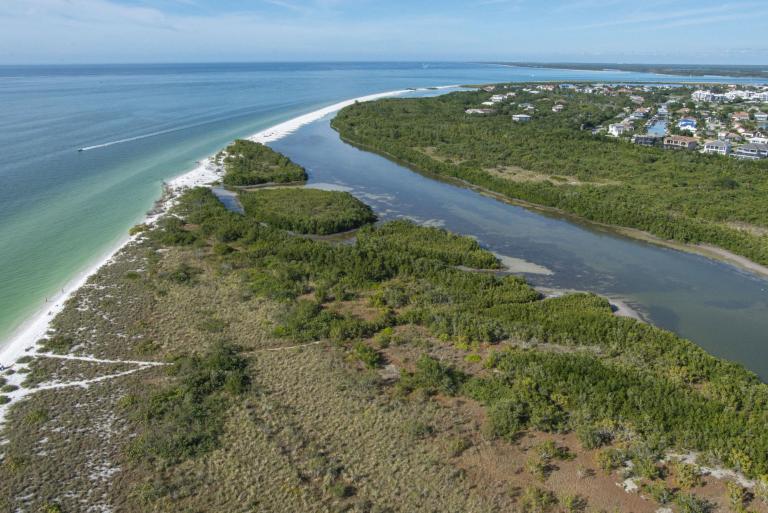
On the northern end of Marco Island sits 32-acre Tigertail Beach Park, accessible via six boardwalks. This beach has a unique feature: Just across a tidal lagoon is a long section of raw beach known as Sand Dollar Spit. From Tigertail Beach, you can get to it by paddleboard, kayak or wading (at low tide only).
Amenities at Tigertail Beach include restrooms, a picnic area with tables and grills, a children’s playground and a butterfly garden.
The Florida Fish & Wildlife Conservation Commission lists Tigertail Beach as one of the best all-around locations for birdwatching in Southwest Florida.
Why is it called Tigertail Beach? It’s named after Thlocklo Tustenuggee, a leader of the Seminole tribe during the Second Seminole War (1835-1842). U.S. Army soldiers coined him “Tiger Tail” because he wore a long strip of panther skin from his waist.
Keewaydin Island
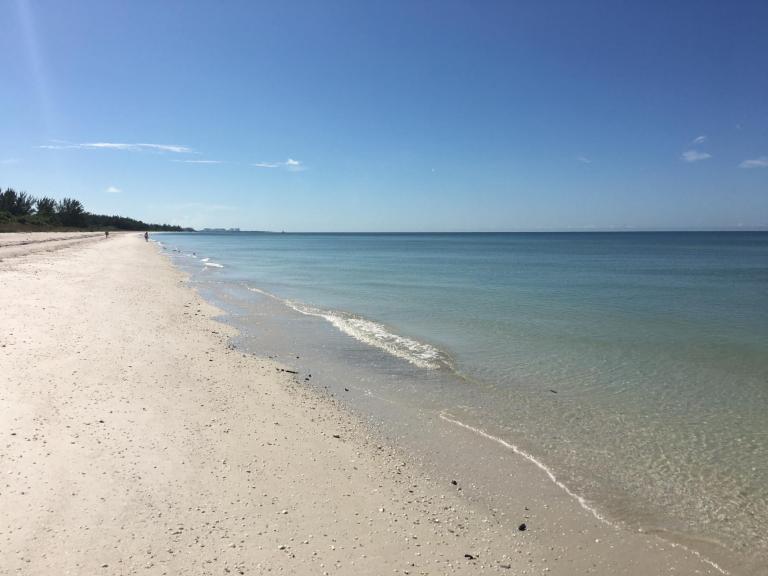
This is arguably the most remote of all Paradise Coast beaches — because you can only get here by boat. You’ll be greeted by a breathtaking, eight-mile stretch of white-sand beach that's renowned for its shelling.
Eight-five percent of the Keewaydin Island is undeveloped, public land under the stewardship of Rookery Bay National Estuarine Research Reserve. The remainder is made up of posh private homes, most of which are not visible from the beach.
If you don’t have a boat, you can rent one at the many marinas on Florida’s Paradise Coast, or take the Hemingway Water Shuttle from Marco Island.
Due to its undeveloped nature, Keewaydin Island has no commercial activity or amenities — not even restrooms. Make sure you plan your trip accordingly.
For the Ultimate in Natural Beauty, Don’t Miss The Everglades
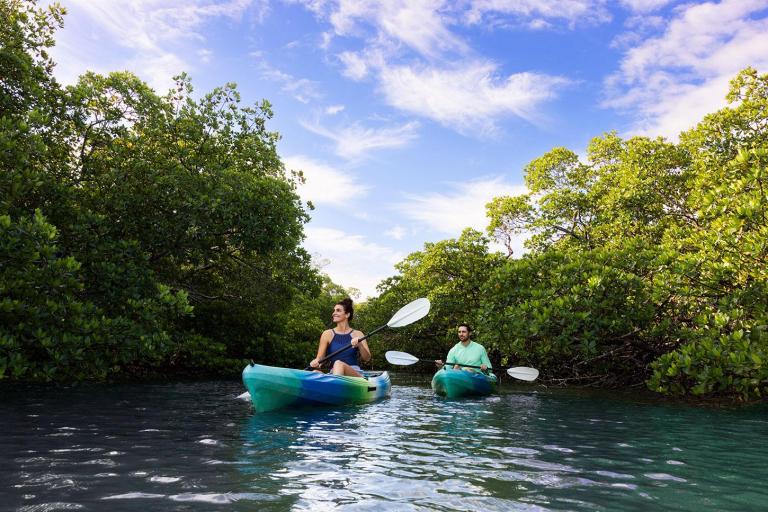
Contrary to popular belief, the Everglades is not a swamp, but rather a vast subtropical ecosystem of wetlands, forest, marine habitats and more. It even has a town — quaint Everglades City.
And while the Everglades is not known for its beaches, it does have lots of stretches of white sand, mostly meant as a respite for campers. To be clear, people don’t come to the Everglades because of the beach. It’s a side benefit. They come for the many wilderness adventures to be had in this ecological marvel, a large portion of which is located on Florida’s Paradise Coast.
Note: Overnight camping in the Everglades requires a permit. And unless you are an experienced explorer and camper, it’s highly recommended to hire a guide for your outing. Here are a couple of suggestions: